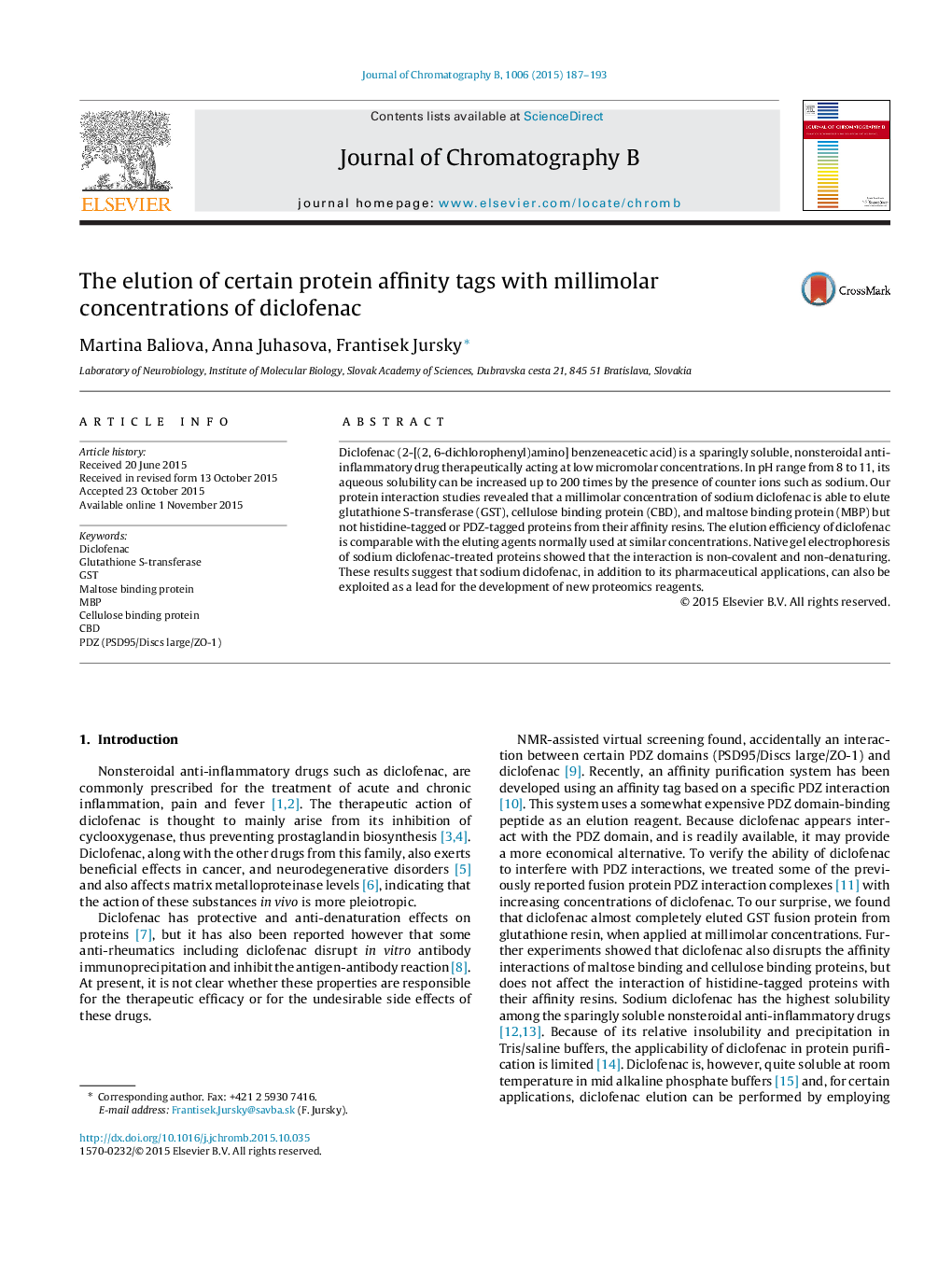| Article ID | Journal | Published Year | Pages | File Type |
|---|---|---|---|---|
| 7616819 | Journal of Chromatography B | 2015 | 7 Pages |
Abstract
Diclofenac (2-[(2, 6-dichlorophenyl)amino] benzeneacetic acid) is a sparingly soluble, nonsteroidal anti-inflammatory drug therapeutically acting at low micromolar concentrations. In pH range from 8 to 11, its aqueous solubility can be increased up to 200 times by the presence of counter ions such as sodium. Our protein interaction studies revealed that a millimolar concentration of sodium diclofenac is able to elute glutathione S-transferase (GST), cellulose binding protein (CBD), and maltose binding protein (MBP) but not histidine-tagged or PDZ-tagged proteins from their affinity resins. The elution efficiency of diclofenac is comparable with the eluting agents normally used at similar concentrations. Native gel electrophoresis of sodium diclofenac-treated proteins showed that the interaction is non-covalent and non-denaturing. These results suggest that sodium diclofenac, in addition to its pharmaceutical applications, can also be exploited as a lead for the development of new proteomics reagents.
Related Topics
Physical Sciences and Engineering
Chemistry
Analytical Chemistry
Authors
Martina Baliova, Anna Juhasova, Frantisek Jursky,
